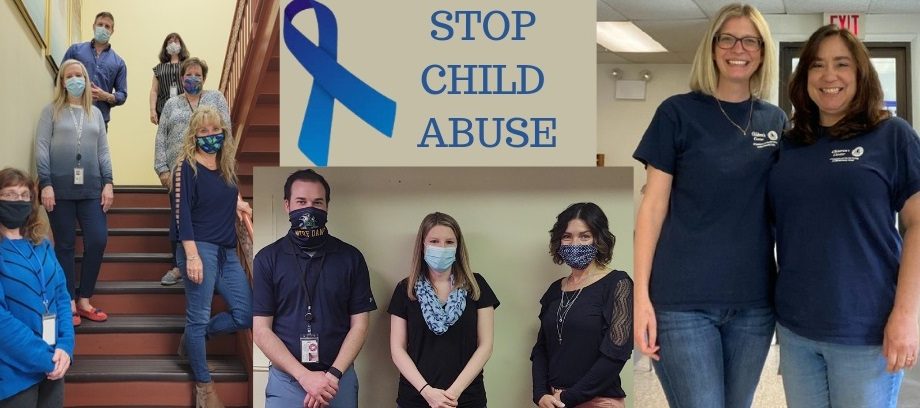Family Services Association (FSA) of Northeastern Pennsylvania is marking Child Abuse Prevention Month in April. Janine A. Fortney, LSW, is the program director of the Children’s Center of Susquehanna & Wyoming Counties, a children’s advocacy center, one of 14 programs offered by the FSA, which provides services and programs in 17 counties in Northeastern and North Central Pennsylvania. She offers the following overview of how to identify and help prevent child abuse.
Throughout the month of April, Children’s Advocacy Centers around the country talk about prevention. We plant pinwheels everywhere as a symbol of Child Abuse Prevention Month.
So what does prevention mean as it relates to child abuse? It means that we should teach children they have the right to be safe. Children should question when adults or other children do things that cause them discomfort physically and emotionally or harms them in some way. Prevention is about making sure children know the difference between safe and unsafe touches (or good touch vs. bad touch as we used to call it) and that adults can recognize the signs of abuse.
Prevention also means talking openly with children about abuse, identifying body parts with their anatomical name, and not allowing the stigma of abuse to cause adults to avoid these tough topics. Lastly, prevention means supporting community programs and organizations that work to protect and serve children and their families.
Signs and symptoms of abuse are not always easy to spot, especially because some things can be typical developmental changes. It is scary to be the person saying, “I think something bad might be happening, but how can I be sure?”
The best advice I can offer is to pay attention to changes in a child’s behaviors. If the child in question is normally upbeat, earns good grades, and spends appropriate time with peers, but is now becoming less inclined to do school work or go to school, spends more time alone, and generally seems less happy this may be a sign of some type of abuse. If there are significant hygiene changes, peer group changes or behavioral changes, abuse could be happening. And if a child’s reasons for marks or bruises are inconsistent, this could be a sign of some type of abuse. The key to being the individual making a report of child abuse is that you are not responsible for the decision making or determinations of whether or not it is child abuse. Your responsibility is to alert authorities and experts, so they can make those decisions and determinations.
There are plenty of programs and educational services available for both adults and children to learn more about the signs and symptoms of abuse. There are also parenting programs to give guidance about discipline, setting routines, and more. Parenting, on good days, is a feat. So when there are additional stressors in daily life – work, family and friends – parenting becomes a struggle. There can be triggers that cause a parent to strike out at their child.
There are also some simple things parents can do to help maintain their composure when pressures are rising and young children are pushing their limits. For example, there are behaviors our young children engage in that are annoying to say the least, but are not harmful to themselves or others. So ignore it. That sounds too good to be true, but it can work. Yes, it takes some practice, but it is an effective way to show children that those annoying behaviors are not wanted.
And as they demonstrate a behavior parents do like, praise that behavior and show them that that is the behavior worth repeating. Spending five minutes a day just playing with a child can show them you have time for them, and their ideas and thoughts are important to you – and you enjoy them as well. With so many things going on every day, we do forget that just sitting with our children for five minutes can give them the reassurance they need from us and in return gives us a few moments of worry-free time with them.
And the last easy thing parents can do is reflect their child’s language. When our children are learning to speak, they very often repeat our words. It helps them learn pronunciation and sounds. Well, now it is your turn to repeat their words. This helps them feel reassured that you are listening and what they have to say is valuable to you.
Child abuse is not easy to address or talk about. Nationally, nearly 700,000 children are abused annually, according to the National Children’s Alliance (NCA), and in Pennsylvania more than 44,000 reported cases of child abuse were made in 2018, the most recent year data was available, according to the Pennsylvania Partnerships for Children.
Moreover, Children’s Advocacy Centers (CAC) across the country served more than 317,000 child victims of abuse in 2019, providing advocacy and support to the victims and their families, according to NCA. These CACs also counsel more than 200,000 kids annually, according to NCA, using “science-backed counseling and therapy services to help them recover from trauma and avoid lifelong impacts of trauma.” In addition, CACs educate more than 2.2 million people annually to help prevent child abuse, according to 2019 data.
It is important to remember, though, that as a community we all can make a difference in confronting child abuse and giving children the opportunity to thrive. If you do suspect abuse, please call Pennsylvania Child Line at 1-800-932-0313. If you have questions about the topics addressed in this article, you can call the Family Service Association of Northeastern Pennsylvania at (570) 823-5144 for further information or log on to www.fsanepa.org.

